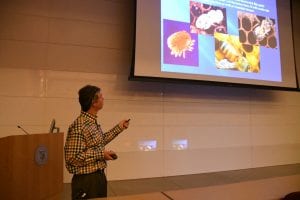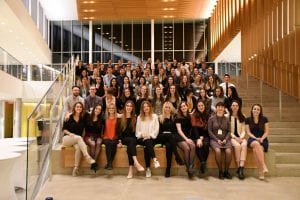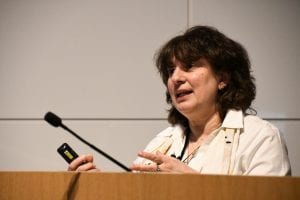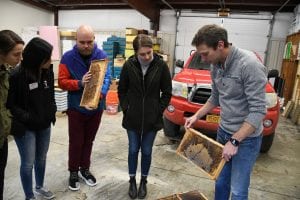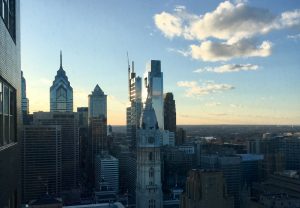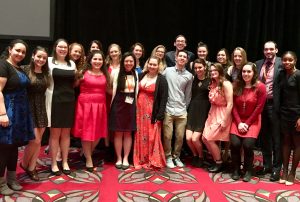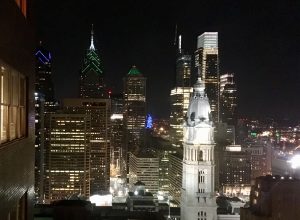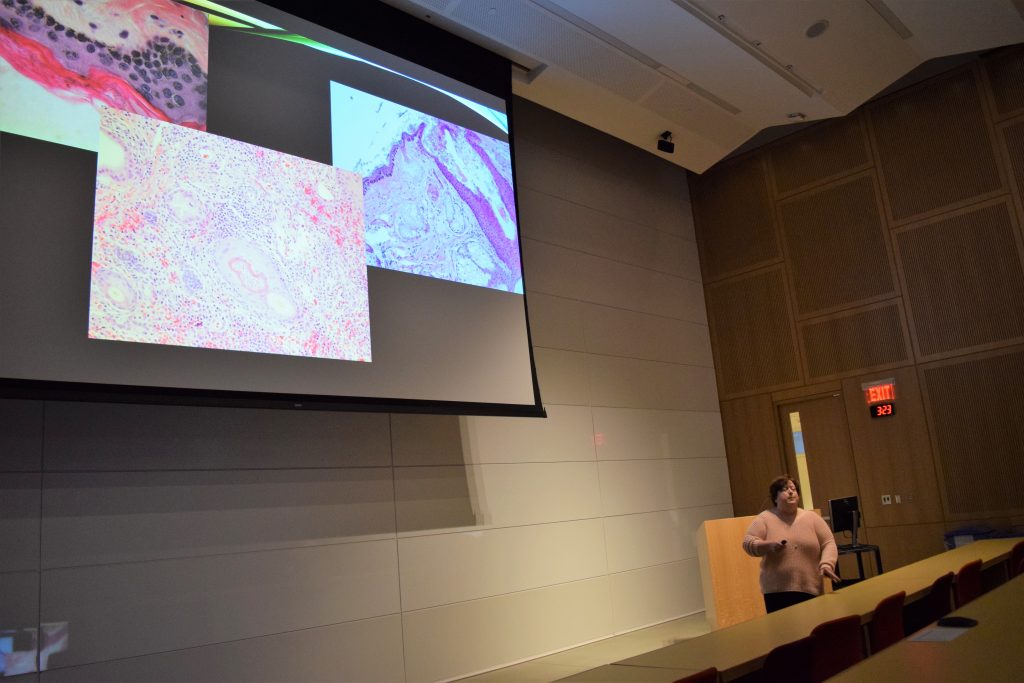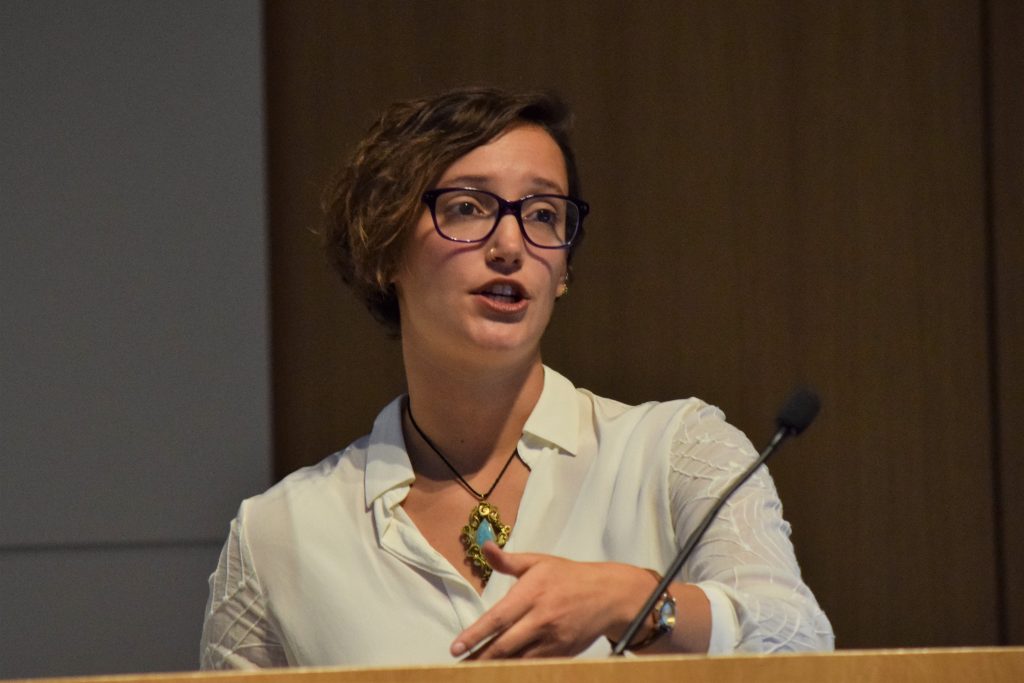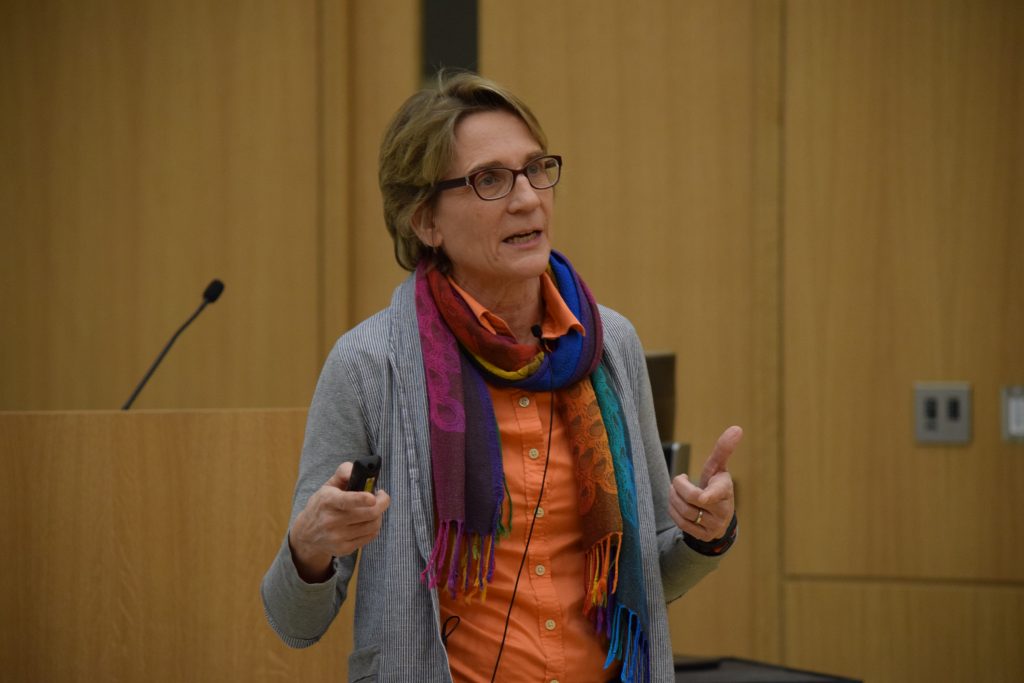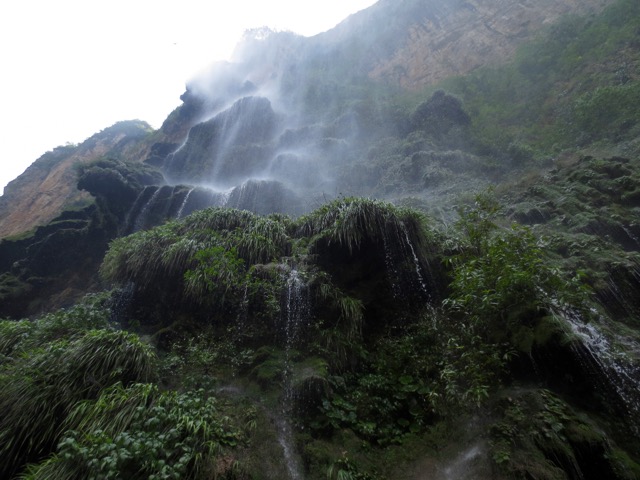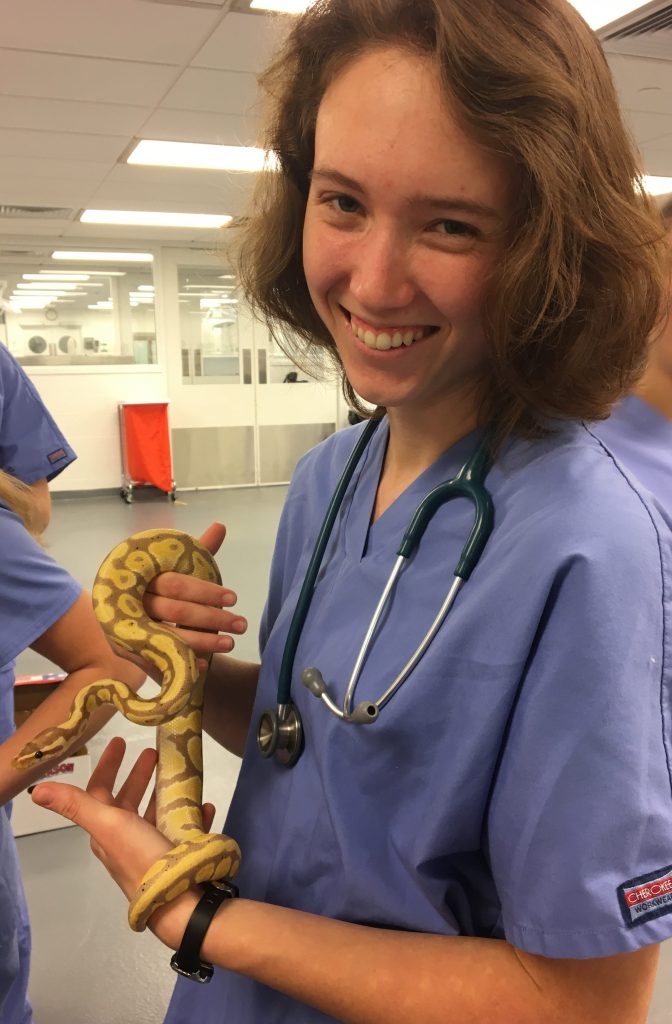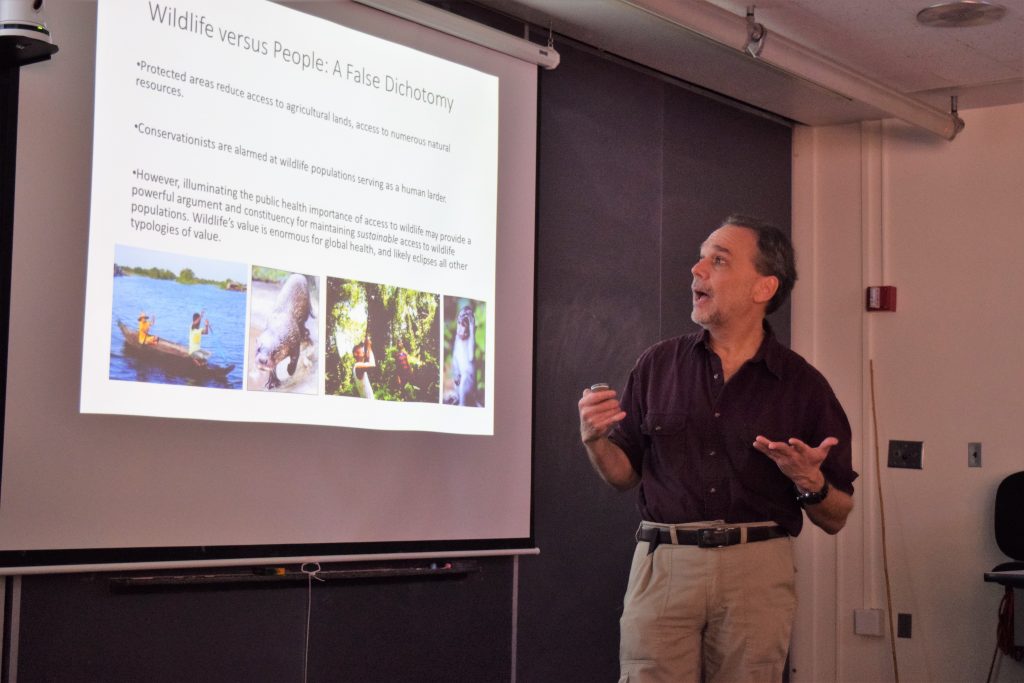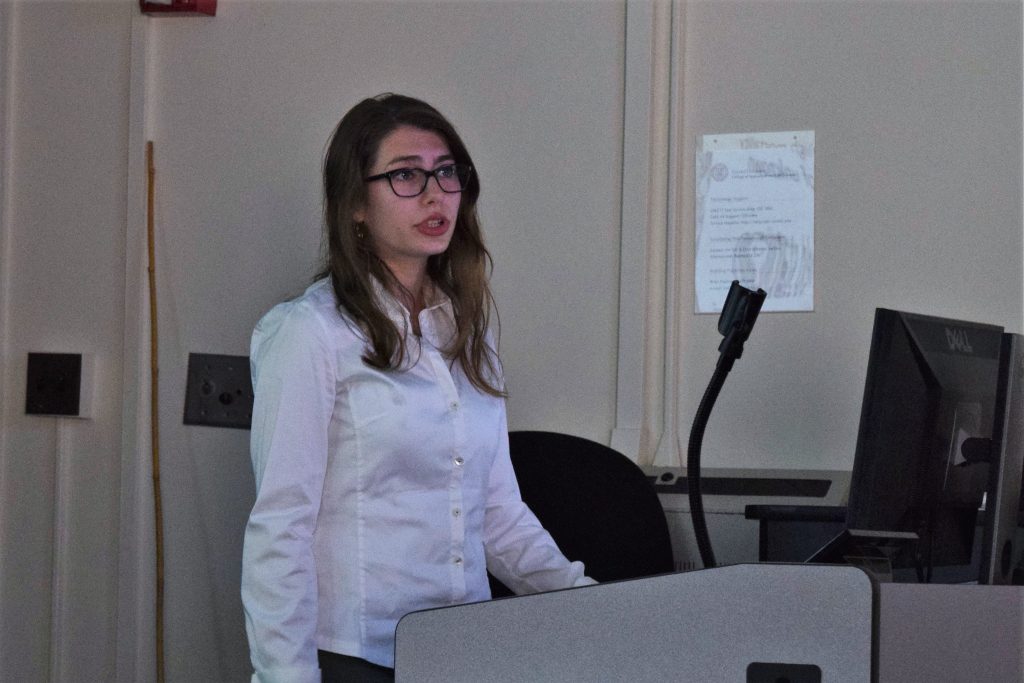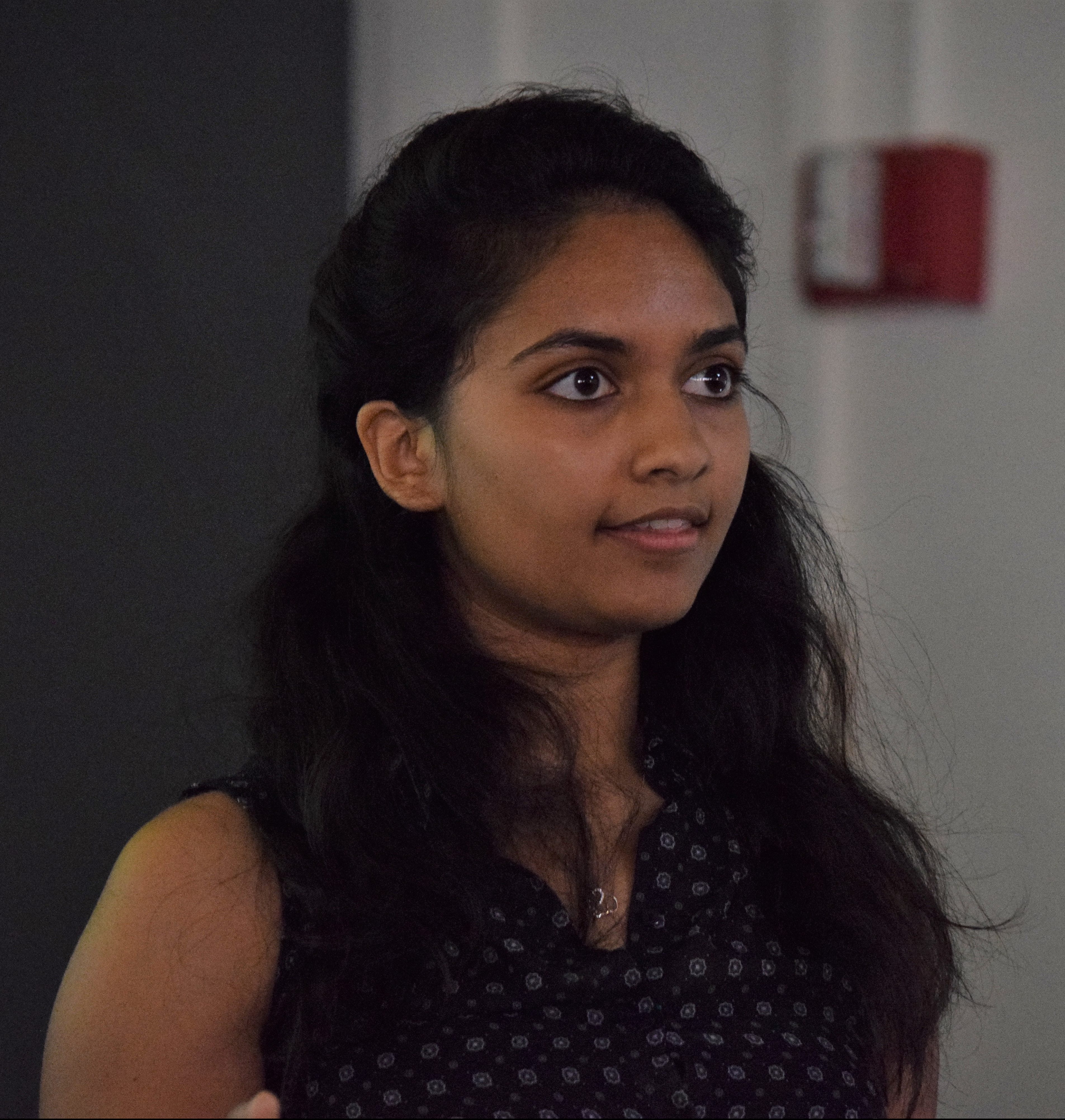Conservation, exotics, and wildlife are increasingly popular fields within veterinary medicine and last week Cornell University College of Veterinary Medicine hosted the Special Species Symposium to shine a light on various topics within these fields. The Special Species Symposium brought speakers from a variety of backgrounds as well as students from Cornell, University of Pennsylvania, and University of Montreal together to discuss zoo, exotic, and wildlife medicine.
Topics discussed ranged from utilizing pathology in conservation to antibiotic therapy in pocket pets to marine mammal rehabilitation. Students also had the opportunity to participate in a number of wet labs including invertebrate clinical skills, darting, turtle shell repair, and avian orthopedics. The symposium opened on Saturday with a lecture from Dr. Robin Radcliffe about honey bee health and the developing role of veterinarians in honey bee management. Dr. Radcliffe discussed the agricultural and economic value of bees and the new federal regulations that require veterinarians to prescribe antibiotics for bee colonies. For the rest of the symposium we got to choose which speakers we wanted to listen to. I listened to Dr. Karen Terio’s lecture, where she discussed the importance of pathology in conservation and how it contributes to species health. She finished by advising those aspiring to work in conservation to develop a skill and use that to market themselves.
Dr. Terio was followed by Dr. Peter DiGeronimo, who gave a lecture on marine mammal rehabilitation and how it affects ocean health. He described how rehabilitation can have conservation, scientific, and social benefits. Wildlife rehabilitators have the most contact with free-ranging wildlife, and can act as sentinels to monitor emerging diseases arising in wild populations. This is especially important in species with low population numbers because the individuals that are able to be returned to the wild have even greater impacts on the species as a whole. He emphasized the role that wildlife rehabilitation centers can play in providing data about various species that researchers may not be able to gather. Finally, he stressed the importance of researchers establishing good relationships with rehabilitators to break down the distrust that some have regarding the motives of researchers.
One of the last lectures on Saturday was on the care and conservation of large felids, given by Dr. Michael McEntire. He discussed various aspects of managing large felids in captivity such as the necessary housing requirements, safety protocols, and restraint techniques. He emphasized the importance of behavioral restraint which involves training animals in certain ways to make them easier to handle and decrease the associated stress. For example, you can train them to present their tails for blood draws or their flanks for injections, and in this way avoid having to anesthetize them for what should be relatively simple procedures. Then Dr. McEntire transitioned to felid diseases such as vitamin A deficiency, myelopathy in cheetahs, and canine distemper virus in lions. Other lectures given on Saturday included an overview of amphibian diagnostics, a session of clinical updates from the Janet L. Swanson Wildlife Health Center, and an update on emerging infectious diseases in reptiles.
During the Saturday afternoon lab sessions, I participated in the invertebrate clinical skills lab. The lab was split between arachnids and marine invertebrates. We learned proper handling techniques of arachnids and how to identify common health problems such as dehydration, or how to ensure the tarantula is able to molt appropriately. We also learned ways a clinician could correct these issues or advise an owner in correcting them. Additionally, we were taught proper anesthesia protocols for lobsters and learned some necessary anatomy for horseshoe crabs and various bivalves including oysters and clams.
The highlight of Saturday, and the symposium in general, was the keynote speaker Dr. Susan Bartlett. Dr. Bartlett is a veterinarian for the Wildlife Conservation Society and she discussed her path to getting that position. She explained how she dealt with various hurdles on her journey, such as having to reapply to veterinary school after not getting in the first time. She emphasized the importance of persistence and shared an anecdote of how she worked at a zoo scooping poop in order to gain elephant experience. Her determination eventually gave her the opportunity to accompany a research team and travel internationally to study elephants. Additionally, Dr. Bartlett discussed how the TV show, The Zoo, has helped to improve public perception of the Bronx Zoo as it sheds light on the amount of work and care zoo professionals dedicate to their animals.
The next day of lectures and labs was just as interesting as the first. It opened with a talk by Katy Payne about whale and elephant communication. She discussed how novel it was to discover in the 1960’s that whales actually sing and the work she has done to analyze these songs. Male whales in the same area sing very similar songs that change every breeding season, and even throughout the season. It is theorized that female whales prefer inventiveness which drives the evolution of the songs over time. Dr. James Morrissey followed with a talk comparing GI stasis and obstruction in rabbits. He taught those in attendance how to identify one versus the other, and the best way to treat these differing conditions. Dr. Lauren Powers of Carolina Veterinary Specialists, went through how to effectively perform a neurological exam on avian patients. She played videos demonstrating different tests and explained what abnormal results might indicate. Finally, Dr. Noha Abou-Madi discussed the tragic occurrence of Elephant Endotheliotropic Herpesvirus (EEHV) and how it manifested in zoos over 20 years ago. This virus can be devastating and has unfortunately killed a number of baby, mostly Asian, elephants. Dr. Abou-Madi detailed her role in researching and trying to culture EEHV. She also explained the current preemptive protocols in place that attempt to identify when an elephant calf contracts the virus, so treatment can begin before clinical signs emerge. She ended on a message of hope, because even though the virus is still unable to be cultured, there is increasing success in saving calves who contract the virus and research is ongoing to potentially develop a vaccine.
In the afternoon, I attended two labs. The first was a tour of the Cornell Bee Labs and the second was an avian orthopedics lab. The tour of the Bee Lab fit in nicely with Dr. Radcliffe’s Saturday lecture. We were able to see more in depth how beekeepers manage their hives and some of the problems that can occur. In the avian orthopedics lab, we learned how to place an intraosseus catheter, and how to set both a humeral and femoral fracture in birds.
Overall, the Special Species Symposium was an incredible opportunity to hear from top professionals in the fields of zoo, exotics, and wildlife medicine. It also provided a unique opportunity to network not just with Cornell students with similar interests, but also with students from other schools.
Cornell hosts the Special Species Symposium every 2 years. For more information on the 2019 Special Species Symposium, visit the website here.


